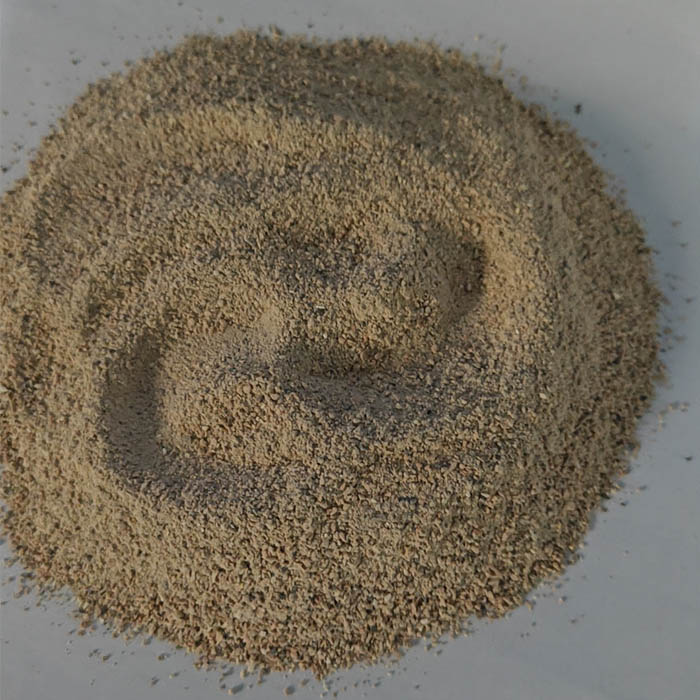Oct . 01, 2024 01:45 Back to list
Innovative Approaches to Developing Superior Scientific Adsorbent Materials for Enhanced Performance
High-Quality Scientific Adsorbents An Overview
Adsorption is a crucial process utilized in various scientific and industrial applications, providing solutions for separation, purification, and concentration of substances. High-quality adsorbents play a vital role in these processes, offering enhanced efficiency, selectivity, and performance. This article delves into the characteristics, types, and applications of high-quality scientific adsorbents, highlighting their importance in various fields.
What are Adsorbents?
Adsorbents are materials that have the ability to capture and retain molecules from a gas or liquid onto their surface. The process of adsorption involves the accumulation of particles on the surface of a solid or liquid, forming a film of the adsorbate. Adsorbents can vary widely in nature, ranging from naturally occurring materials like activated carbon to engineered substances such as zeolites and metal-organic frameworks (MOFs).
Characteristics of High-Quality Adsorbents
1. Surface Area A high surface area is one of the most critical properties of an effective adsorbent. The larger the surface area, the more adsorption sites are available for the target molecules, resulting in improved adsorption capacity.
2. Pore Structure The pore size and distribution within the adsorbent significantly influence its performance. Microporous adsorbents are suitable for small molecules, while mesoporous and macroporous materials can accommodate larger molecules. A tailored pore structure allows for selective adsorption.
3. Chemical Stability High-quality adsorbents must maintain their structural integrity and performance over time, even in harsh environmental conditions. Chemical stability ensures that the adsorbent can effectively perform its function without degrading.
4. Affinity for Target Molecules The interaction between the adsorbent and the adsorbate is critical. High-quality adsorbents often have functional groups that enhance selectivity and affinity for specific target molecules. This is particularly important in applications like water treatment and gas separation.
5. Fast Kinetics The rate at which adsorption occurs is also essential. High-quality adsorbents demonstrate rapid adsorption kinetics, enabling efficient and effective processes, particularly in dynamic systems.
Types of High-Quality Adsorbents
high quality scientific adsorbents

- Activated Carbon Widely used due to its high surface area and porosity, activated carbon is effective in removing contaminants from air and water. It is particularly effective in adsorbing organic chemicals and is extensively used in water purification and air filtration.
- Zeolites These crystalline, porous materials are known for their ion-exchange capabilities and selective adsorption properties. Zeolites are commonly employed in catalytic processes, gas separation, and as desiccants.
- Metal-Organic Frameworks (MOFs) MOFs represent a new class of adsorbents characterized by their high surface area and tunable pore sizes. They have gained prominence in gas storage, separation, and catalysis due to their versatility and efficiency.
- Silica Gel An amorphous form of silicon dioxide, silica gel is often used as a desiccant and in chromatography due to its controlled porosity and surface properties.
Applications of High-Quality Adsorbents
1. Environmental Remediation High-quality adsorbents are instrumental in removing pollutants from wastewater and air. Their efficiency in capturing heavy metals, organic compounds, and volatile organic pollutants is critical for sustainable environmental practices.
2. Gas Storage and Separation In energy applications, adsorbents such as MOFs play a significant role in storing hydrogen and methane, as well as in carbon capture processes. The selective adsorption properties of these materials enable efficient separation and storage.
3. Pharmaceuticals and Biotechnology In the pharmaceutical industry, adsorbents are used for purification processes such as chromatography and for drug delivery systems. High-quality adsorbents can enhance the efficiency of these processes, leading to better yields and purities.
4. Food Industry Adsorbents are utilized for the removal of unwanted flavors, colors, and contaminants from food products. Their ability to selectively capture these substances ensures product quality and safety.
Conclusion
High-quality scientific adsorbents are integral to numerous applications across various industries, providing efficient solutions for challenges in separation, purification, and environmental remediation. The continuous development of advanced adsorbents, along with a deeper understanding of their properties and interactions, will pave the way for innovative applications that can address some of the most pressing challenges in science and technology. As the demand for sustainable solutions grows, the importance of these materials will only increase, underscoring their role in the future of scientific advancements.
-
Fe-C Composite Pellets for BOF: Enhance Steelmaking Efficiency
NewsAug.07,2025
-
Eco-Friendly Granule Covering Agent | Dust & Caking Control
NewsAug.06,2025
-
Fe-C Composite Pellets for BOF: High-Efficiency & Cost-Saving
NewsAug.05,2025
-
Premium Tundish Covering Agents Exporters | High Purity
NewsAug.04,2025
-
Fe-C Composite Pellets for BOF | Efficient & Economical
NewsAug.03,2025
-
Top Tundish Covering Agent Exporters | Premium Quality Solutions
NewsAug.02,2025
